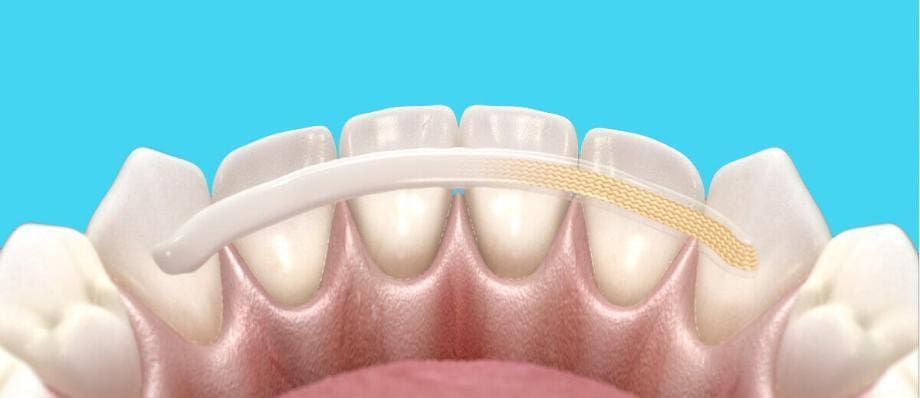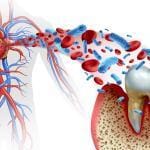Dental injuries are common occurrences, often resulting from accidents, sports-related incidents, or even day-to-day activities. One of the most prevalent types of dental injuries involves fractures or loosening of teeth. Splinting teeth is a vital aspect of dental care that plays a crucial role in stabilizing and restoring damaged teeth. In this comprehensive guide, we will explore the various aspects of splinting teeth, including its purpose, types, procedure, benefits, and aftercare.
Understanding Splinting Teeth
Splinting teeth is a dental procedure aimed at stabilizing and immobilizing a tooth that has been fractured, dislodged, or has undergone trauma. The primary goal of splinting is to aid in the healing process by allowing the damaged tooth to reattach and regain its strength. It is a valuable technique that prevents further damage, alleviates pain, and supports the tooth during the healing period.
Types of Splinting
There are two main types of splinting techniques used in dental practice: rigid and flexible splints.
Rigid Splints
Rigid splints involve the use of materials like composite resins, wires, or metal bands to firmly immobilize the injured tooth to adjacent stable teeth. This type of splinting provides strong support and stability, promoting proper healing. Rigid splints are often used in cases of severe tooth displacement or avulsion.
Flexible Splints
Flexible splints use materials like composite resin, wire, or orthodontic bands to provide a more moderate level of stability. These splints allow for slight mobility of the injured tooth, which can be advantageous in cases where there is a risk of damage to the tooth’s periodontal ligaments. Flexible splints are commonly used when the injury involves minor tooth mobility.
Applications of Tooth Splinting
This technique has several applications:
- Trauma Management
- Periodontal Treatment
- Fractured Teeth
- Post-Orthodontic Treatment
- Temporary Support
- Prevent Further Damage
- Preservation of Tooth Structure
Trauma Management
Tooth splinting is commonly used to stabilize teeth that have been injured due to trauma, such as sports injuries, falls, or accidents. It helps to hold the teeth in place while they heal.
Periodontal Treatment
In cases of advanced gum disease (periodontitis), teeth may become loose due to the loss of supporting bone and tissues around them. Tooth splinting can provide temporary stability to these teeth while periodontal treatment is underway.
Fractured Teeth
Teeth that are fractured or cracked may require splinting to hold the fragments together while the tooth heals. This prevents further damage and allows for proper healing.
Post-Orthodontic Treatment
Sometimes after orthodontic treatment, particularly if teeth have been moved significantly, they may become slightly loose. Splinting can help stabilize these teeth as they adjust to their new positions.
Temporary Support
In some cases, tooth splinting may be used as a temporary measure while awaiting more permanent treatment or while the patient considers their options. For example, if a tooth needs to be extracted but the patient wants to explore options for tooth replacement, splinting can provide stability in the interim.
Prevent Further Damage
Loose teeth can be susceptible to further damage from chewing forces or movement. Splinting helps to immobilize these teeth, reducing the risk of additional injury or complications.
Preservation of Tooth Structure
By stabilizing loose teeth, tooth splinting can help preserve the natural tooth structure and prevent the need for extraction.
The Splinting Procedure
The procedure for splinting teeth involves several steps:
- Assessment
- Tooth Preparation
- Stabilization
- Curing
- Post-Procedure Instructions
Assessment
A thorough examination of the injured tooth is conducted, including X-rays to determine the extent of damage and the best approach to splinting.
Tooth Preparation
The damaged tooth is cleaned and prepared for the splinting procedure. This may involve gentle repositioning of the tooth to its original position.
Stabilization
Depending on the severity of the injury, the appropriate splinting technique is chosen – either rigid or flexible. The splinting material is then applied to the injured tooth and adjacent stable teeth.
Curing
If composite resin is used, it is hardened using a special curing light. This ensures that the splinting material bonds effectively to the teeth.
Post-Procedure Instructions
Patients are provided with care instructions, including guidelines on oral hygiene, diet, and activities to avoid during the healing period.
Benefits of Splinting
Splinting teeth offers numerous benefits for both the patient and the dental professional:
- Stabilization
- Pain Relief
- Healing Support
- Functional Restoration
- Prevention of Complications
Stabilization
Splinting helps stabilize the injured tooth, preventing further movement and damage during the healing process.
Pain Relief
Immobilizing the injured tooth reduces discomfort and pain associated with dental trauma.
Healing Support
Splinting promotes proper healing by allowing damaged tissues to repair and reattach.
Functional Restoration
Splinting enables the patient to maintain normal oral functions such as chewing and speaking.
Prevention of Complications
Splinting prevents complications like malocclusion, root resorption, and gum problems that can arise from untreated dental injuries.
Aftercare and Monitoring
After splinting teeth, patients need to adhere to specific aftercare instructions to ensure successful healing:
- Oral Hygiene
- Dietary Restrictions
- Regular Follow-up
- Splint Removal
Oral Hygiene
Proper oral hygiene practices, such as gentle brushing and rinsing with a prescribed mouthwash, are essential to prevent infection and maintain oral health.
Dietary Restrictions
Patients should avoid hard, sticky, or crunchy foods that could dislodge the splint or damage the injured tooth.
Regular Follow-up
Regular visits to the dentist are crucial for monitoring the healing progress and making any necessary adjustments to the splint.
Splint Removal
The duration of splinting varies depending on the type and severity of the injury. Once the dentist determines that the tooth has healed adequately, the splint is carefully removed.
Future Developments and Considerations
As the field of dentistry continues to advance, so too do the techniques and materials used in splinting teeth. Researchers and dental professionals are constantly exploring innovative ways to enhance the effectiveness and comfort of splinting procedures. Some potential future developments include:
- Biocompatible Materials
- Digital Imaging and Planning
- Customized Splints
- Minimal Invasive Techniques
- Telemedicine and Remote Monitoring
- Patient Education
Biocompatible Materials
The use of biocompatible materials in splinting, such as bioresorbable polymers, could eliminate the need for splint removal, reducing patient discomfort and simplifying the healing process.
Digital Imaging and Planning
Advanced digital imaging technologies, such as cone-beam computed tomography (CBCT), can provide detailed 3D images of dental injuries. This aids in accurate diagnosis and personalized treatment planning for splinting procedures.
Customized Splints
With the help of 3D printing technology, it may become possible to create personalized, patient-specific splints that perfectly fit the contours of the injured teeth and surrounding tissues.
Minimal Invasive Techniques
As dental techniques become more minimally invasive, splinting procedures could evolve to be even less disruptive to the surrounding oral structures, leading to quicker healing and improved patient comfort.
Telemedicine and Remote Monitoring
Advancements in telemedicine could enable dentists to remotely monitor the healing progress of splinted teeth, allowing for timely adjustments and reducing the need for frequent in-person visits.
Patient Education
Increasing patient awareness about dental trauma and the importance of seeking prompt treatment can lead to better outcomes. Dental professionals may focus on educational campaigns to empower individuals with the knowledge to respond effectively to dental injuries.
Conclusion
Splinting teeth is a fundamental dental procedure that plays a vital role in treating and managing dental injuries. Whether the damage is minor or severe, splinting techniques offer effective solutions for stabilizing and supporting injured teeth during the critical healing period. By understanding the types of splints, the procedure involved, and the benefits it offers, patients and dental professionals can work together to ensure optimal oral health and successful recovery. If you experience a dental injury, seeking prompt attention from a qualified dentist and considering splinting as part of your treatment plan can make a significant difference in preserving your smile and overall well-being.





